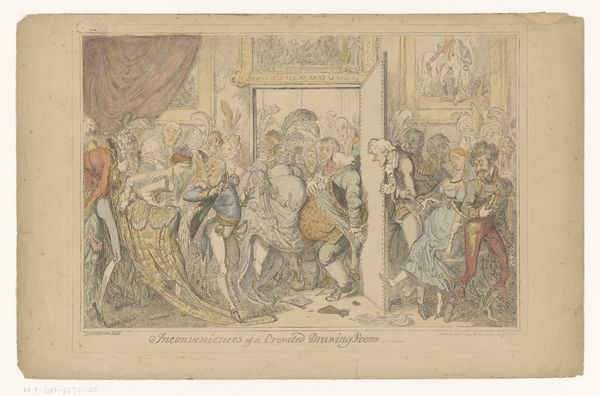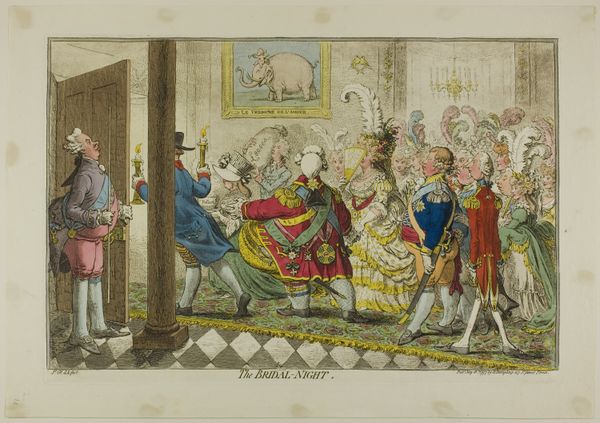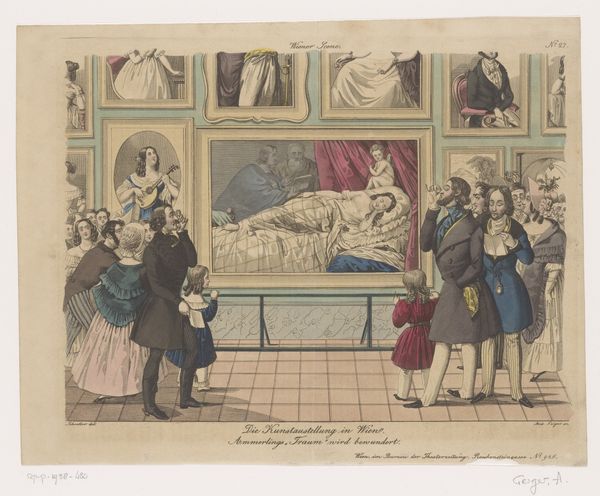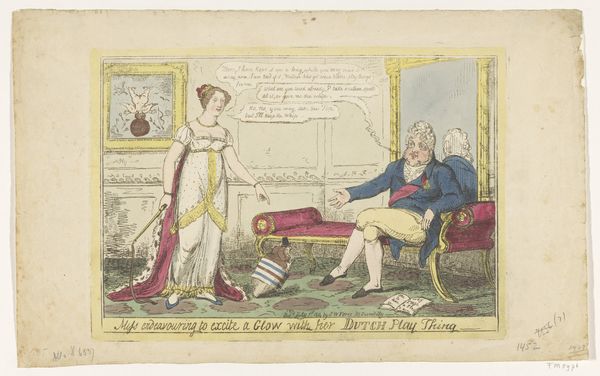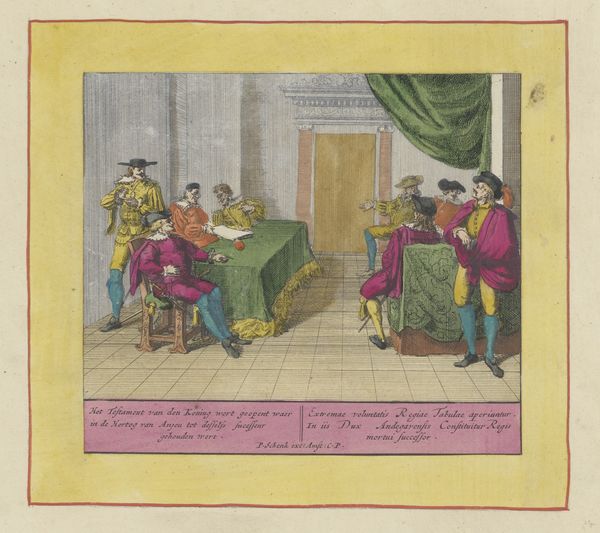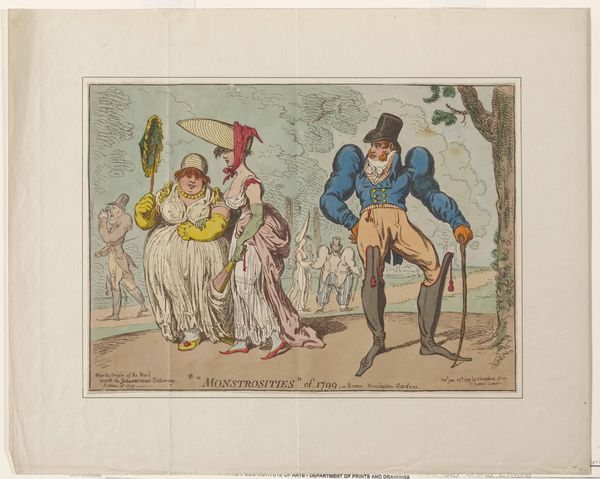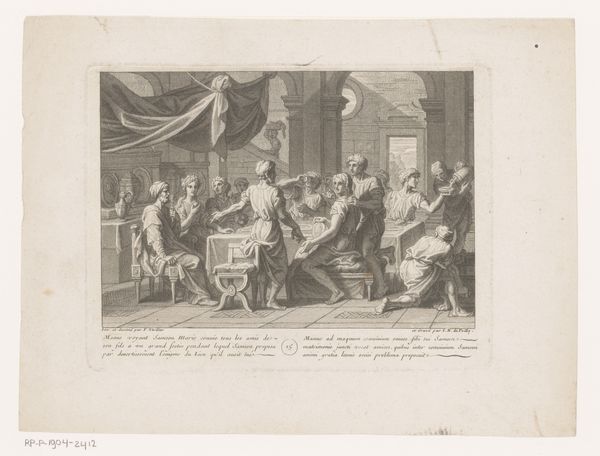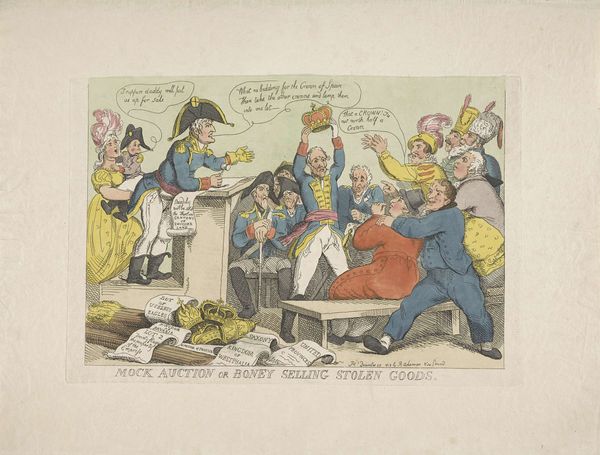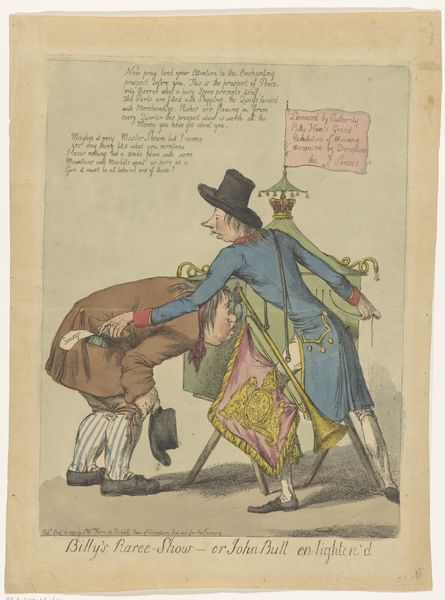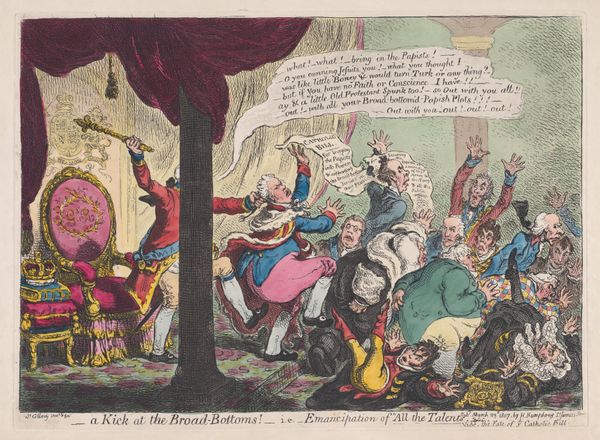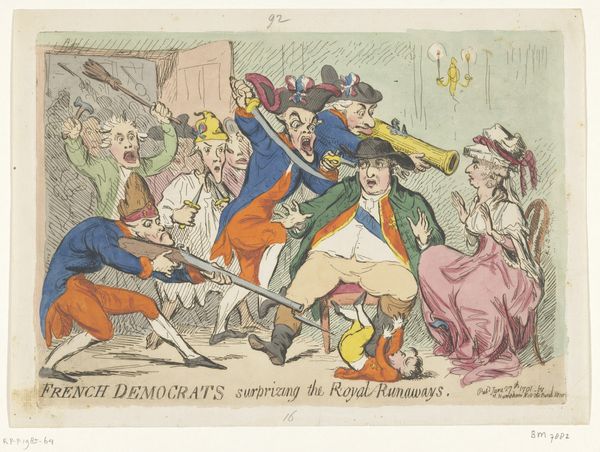
drawing, print, watercolor
#
drawing
# print
#
caricature
#
watercolor
#
romanticism
#
watercolour illustration
#
genre-painting
Dimensions: height 250 mm, width 352 mm
Copyright: Rijks Museum: Open Domain
Curator: This work, entitled "De Amoureuze Tiroolse", is attributed to an unknown artist, likely dating between 1827 and 1829. The Rijksmuseum houses this drawing and print, a vibrant watercolor that blends caricature and genre painting, echoing elements of Romanticism. What’s your immediate impression? Editor: A whirlwind of societal commentary! The chaotic composition and exaggerated expressions give it a frantic energy. It’s unsettling, almost like witnessing a private drama spill out into public view. Curator: Precisely! These satirical prints often served as a form of political and social critique. Consider the title—"The Amorous Tyrolese; or, Royal Virtue in Danger." The context points to George IV, whose scandalous personal life was ripe for such commentary. The arrival of Tyrolese singers becomes the catalyst for exposing, or perhaps fabricating, a compromising situation. Editor: I see the figures in green as the singers, then there's a man raising his walking stick defensively or to strike and there is a scene on the right with the King seated and a woman embracing him. The expressions on the faces! Pure shock, outrage, maybe even a touch of titillation in some eyes. Is this then a commentary on power and morality, and how they're often at odds, particularly concerning figures like George IV? Curator: Absolutely. These visual narratives frequently lampooned those in power, exposing perceived hypocrisy and excesses. The print likely tapped into existing public sentiment about the King's lifestyle, acting as both entertainment and a form of veiled protest. Editor: The materiality of the piece is interesting. Watercolor lends a softness that contrasts with the sharpness of the satire. The print aspect allowed for wider distribution, amplifying the critique. In looking more closely I notice speech bubbles and written content on the bottom that offers clues to this story. There’s a clever layering here of art, media, and politics. I think what strikes me most is how timeless this feels. Even now, the public consumption of scandal hasn’t changed all that much. Curator: It's a shrewd observation. The techniques have evolved, but the appetite for such narratives—especially when they involve power dynamics—remains strong. Reflecting on this artwork reveals enduring questions about the role of art in challenging authority and the ongoing interplay between public perception and private lives. Editor: Yes, it encourages us to question how image is a potent instrument that can reflect, critique, and even reshape our understanding of figures, identities, and culture.
Comments
No comments
Be the first to comment and join the conversation on the ultimate creative platform.

